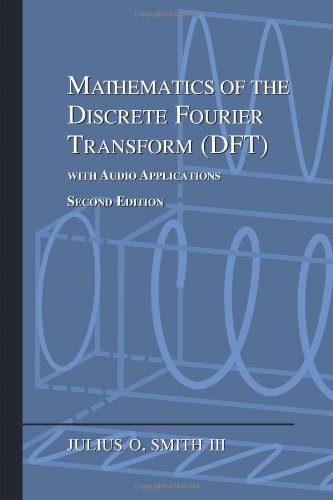Round-Off Error Variance
This appendix shows how to derive that the noise power of amplitude
quantization error is ![]() , where
, where ![]() is the quantization step
size. This is an example of a topic in statistical signal
processing, which is beyond the scope of this book. (Some good
textbooks in this area include
[27,51,34,33,65,32].)
However, since the main result is so useful in practice, it is derived
below anyway, with needed definitions given along the way. The
interested reader is encouraged to explore one or more of the
above-cited references in statistical signal processing.G.10
is the quantization step
size. This is an example of a topic in statistical signal
processing, which is beyond the scope of this book. (Some good
textbooks in this area include
[27,51,34,33,65,32].)
However, since the main result is so useful in practice, it is derived
below anyway, with needed definitions given along the way. The
interested reader is encouraged to explore one or more of the
above-cited references in statistical signal processing.G.10
Each round-off error in quantization noise ![]() is modeled as a
uniform random variable between
is modeled as a
uniform random variable between ![]() and
and ![]() . It therefore
has the following probability density function (pdf) [51]:G.11
. It therefore
has the following probability density function (pdf) [51]:G.11
![$\displaystyle p_e(x) = \left\{\begin{array}{ll}
\frac{1}{q}, & \left\vert x\ri...
...2} \\ [5pt]
0, & \left\vert x\right\vert>\frac{q}{2} \\
\end{array} \right.
$](http://www.dsprelated.com/josimages_new/mdft/img2027.png)

The mean of a random variable is defined as

The mean of a signal ![]() is the same thing as the
expected value of
is the same thing as the
expected value of ![]() , which we write as
, which we write as
![]() .
In general, the expected value of any function
.
In general, the expected value of any function ![]() of a
random variable
of a
random variable ![]() is given by
is given by

Since the quantization-noise signal ![]() is modeled as a series of
independent, identically distributed (iid) random variables, we can
estimate the mean by averaging the signal over time.
Such an estimate is called a sample mean.
is modeled as a series of
independent, identically distributed (iid) random variables, we can
estimate the mean by averaging the signal over time.
Such an estimate is called a sample mean.
Probability distributions are often characterized by their
moments.
The ![]() th moment of the pdf
th moment of the pdf ![]() is defined as
is defined as

The
variance
of a random variable ![]() is defined as
the
second central moment of the pdf:
is defined as
the
second central moment of the pdf:
![$\displaystyle \sigma_e^2 \isdef {\cal E}\{[e(n)-\mu_e]^2\}
= \int_{-\infty}^{\infty} (x-\mu_e)^2 p_e(x) dx
$](http://www.dsprelated.com/josimages_new/mdft/img2042.png)

Next Section:
Matrix Multiplication
Previous Section:
Logarithmic Number Systems for Audio



















